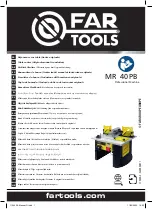
Sirius 800 Series User Manual
5919 Sirius 800 Video AHP Input Module with Delay and Sync
Input Rear Panels and Input
Iss 5 Rev 7
Page 150
© 2017 SAM
9.19.2.1
Why Use Input Embedding?
In a live productions and incoming line areas, there is often a need to create a “package” of
video with multiple embedded audio channels.
The audio channels may be:
•
Different formats (for example; stereo, AES, Dolby E, etc.)
•
Audio mix of local commentary and remote ambience.
•
Stereo and mono downmixes.
•
Multiple languages.
Previously without Input Embedding
:
The “package” would previously have been created on an output Video AHP module. A
combination of signals from the embedded audio, MADI and AES audio would be routed to a
video AHP output module, where the audio was embedded into the video signal. This
“package” would be wrapped around the router to a video input module and from there routed
to multiple video outputs.
Input Embedding Solution
:
With input embedding the same “package” is created on the video AHP input module, adding
audio from any source by routing it directly to the incoming video signal.
Benefits of Input Embedding:
•
No output embedder module, non AHP video output modules can be fitted
•
No wrap-around cabling
•
No additional video input module
•
Saves cost and power
•
Simplifies the system architecture
Input Embedding is selectable per mono channel. This allows some incoming audio channels
to be preserved, and some overwritten. Incoming Embedded Audio channels that are
overwritten on inputs are not available for audio routing. Incoming Audio channels can be
moved to other tracks on the AHP input module.
Figure 103 Creating a “Package” without Input Embedding
Figure 104 Creating a “Package” using Input Embedding
















































